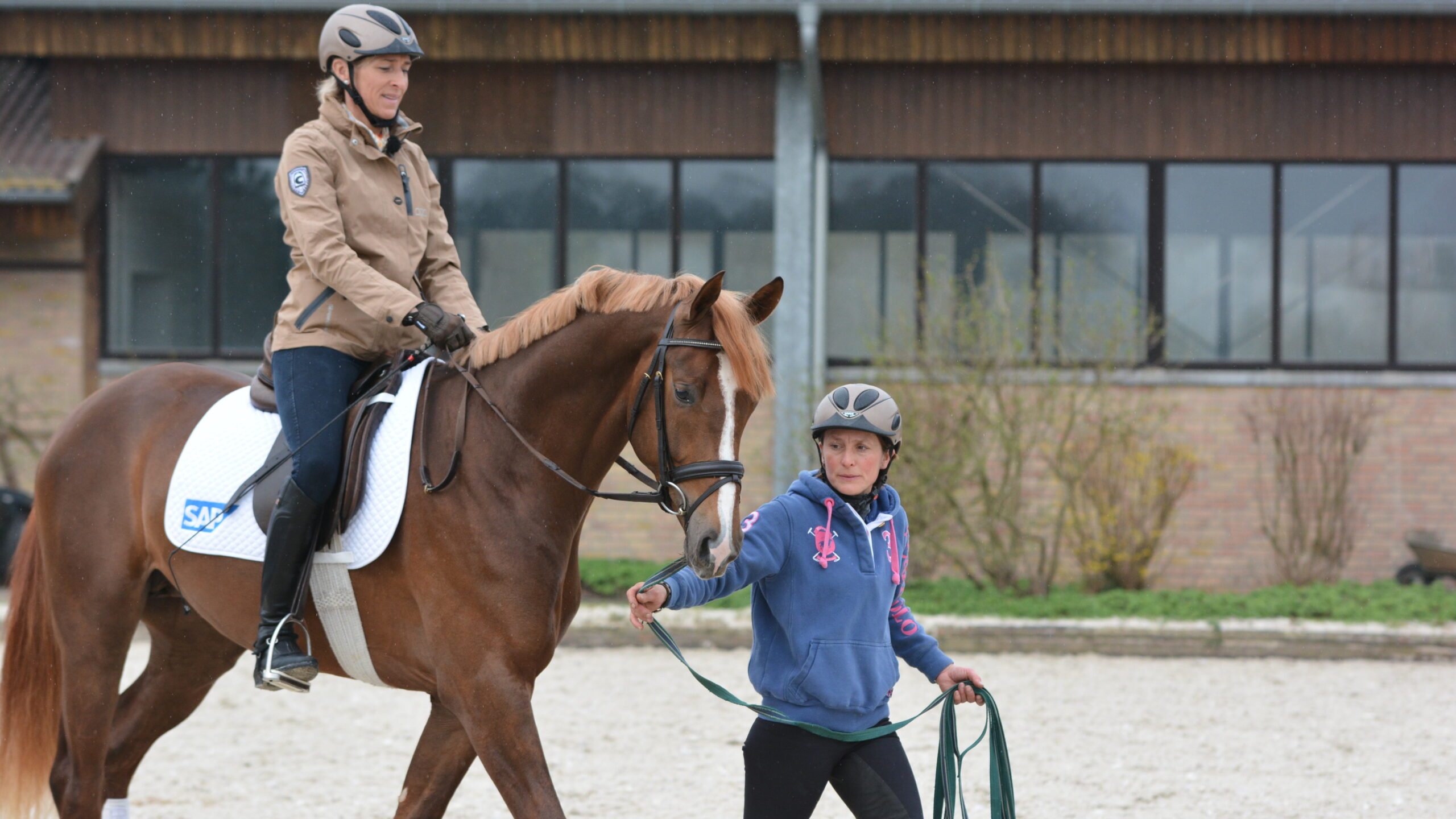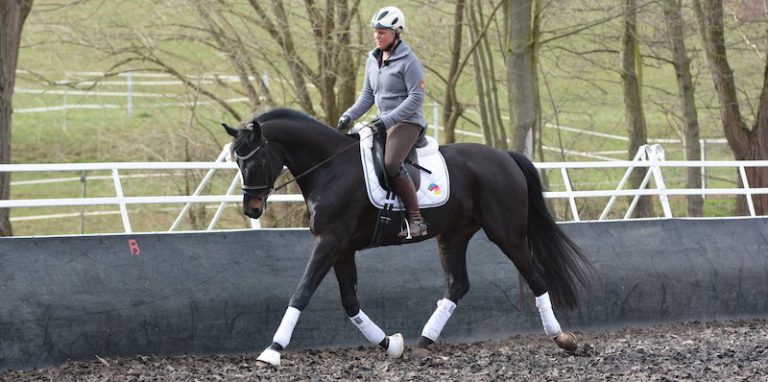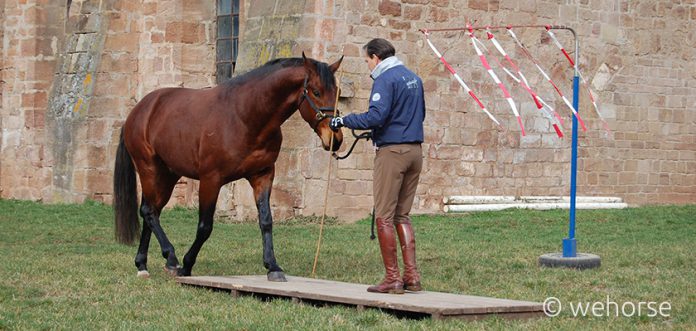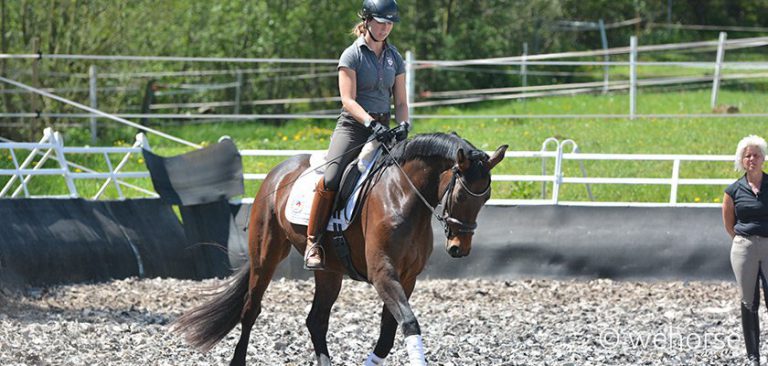Training Young Horses
A blank sheet of paper holds such promise; such potential. The same could be said of young horses. Naturally, they’re not a completely blank slate, bringing with them vast ranges of experiences that they have acquired along the way, but a fresh start in training and human relationships and potential.
Beginning Your Journey Together, the Right Way
Starting work on a young prospect is an immensely rewarding experience. The rich partnership you establish with your horse is unlike any other relationship in the world, but that is not to say that it is easy work. Every single horse is different, and there is no singular, tried-and-true methodology for taking young horses and making them capable of being ridden. There are, however, some general principles and guidelines that are true of the work you do with any horse, and these concepts serve as the road map that most trainers utilize today.

Desensitization
The term, desensitization, in the equine industry, refers to the process of reducing the fear response to what is initially, a stimulus young horses find to be frightening, after repeated exposure to it. The goal here is to eliminate the fear, not amplify it. Our own hands and bodies serve as an excellent example. Horses do not naturally find the presence of human beings to be that of appeal, let alone, our touch. Young horses need to be desensitized to human touch and proximity.
Start Early
In the wild, and often even when owned by individuals, young horses are only touched by their mothers or other horses in the pack. Occasionally, yes, they will be around humans, but this exposure will be brief, and limited. Given this limited exposure, their natural inclination will be to be afraid of human touch and interaction. Their very necessary, innate, biological fight or flight response kicks in when confronted with the presence of a human being, and to be willing to accept our interaction, they will essentially need to learn that humans are not something to be feared, but rather, that their interaction with us; the time spent with us, is something to relish and enjoy. That is why it is so very important to begin working with colts and fillies at a young age, and that too is where a gentle hand and a positive mental attitude play such powerful roles.
The Role of Desensitization in Training
Desensitization plays a critical role in the training process, and in gradually moving young horses from being handled on the ground to being worked under saddle. There also exist several additional practical reasons to want your young horses to become desensitized to various stimuli, people, or activities or commands. First off, you want to be able to clean, check, and shoe or trim their feet. Being able to pick up their hooves to have them worked on, or just to perform maintenance, like cleaning out their feet, is incredibly important. Additionally, you want to be able to check your horse for any cuts, swelling, or other injuries, and be able to subsequently treat those injuries, so there are many, many reasons to want to be able to handle your young horses.
Getting Started
The first thing you really want to focus on is that desensitization, on the ground. Allow your horse to get to know you. Let him smell you; talk to him. Let him grow accustomed to the sound of your voice. You and your horse are going to spend many incredible years together, and there will be times where you find yourselves in precarious situations, and you’re going to have to trust each other, so intimacy and confidence in your partner is a must. Make each moment you spend with him as loving and as positive as possible, and you’re already off to an incredible start.
Handling your young horse
Next, you will want to gradually begin to teach your young horses to respond to your touch; to your gentle cues. Remember, young horses will naturally move away from pressure, so it’s incredibly important that your touch is gentle; is subtle, or he will naturally want to move away from it. Eventually, you will want to be able to touch your horse anywhere. It’s best to start around the back, neck, shoulders, and withers. To begin, their backs basically serve as their weather shields, and are the least sensitive part of their bodies. In addition, the position you will be in to touch these various body parts makes it is easy for your horse to see you, and see what you are doing, and this will help him feel safe.
Eventually, once you feel your horse is comfortable with you touching his shoulder area, you will want to work back and then down. Pat his rump gently a few times, talk to him, if he shows no signs of stress and discomfort, gradually work your way down his legs. Remember, this is not going to be a quick process. It could take days, or even weeks for your young horses to touch their fetlocks without becoming unnerved, and that’s okay. The key is to take your time, maintain a positive attitude, be patient, and always, always end on a good note.
The Process of Introducing the Saddle
By now, your young horses should be pretty well desensitized from your touch. You should have spent a great deal of time allowing them to adjust to wearing a halter, learning to lead and back and trot and halt on the ground. They should allow you to pick up his feet and touch his ears and turn him, and do a variety of other tasks on the ground, and now it’s time to introduce the saddle. Do not rush the process. If it takes a few days to actually get him comfortable wearing it, that’s okay. Each horse will work at his or her own pace.
“Sacking Out”
A common phrase used for this phase of training is “sacking out” (*it originates from the use of a burlap sack), and that idiom refers to the process by which you desensitize young horses from the saddle. In reality, however, this doesn’t end up just being the saddle, but also the saddle pad, the reins, the cinch or the girth, and any and all other pieces of tack he will be exposed to while he is being ridden. Note that for this exercise, it is really best to have a helper, or someone to hold the lead rope so that you have full control of the young horses you are working with, and are safe, while still having the use of both hands to complete this exercise. It’s best to begin by desensitizing him to the saddle pad. Begin by letting him touch it; let him smell it. Let him investigate it as long as it takes for him to decide it’s harmless. Then, begin to gradually desensitize him from it, much like you did when you began the desensitization process using your hands. When he’s ready, gently place it on his back, just as you would when placing a saddle.
You’re Ready for the Saddle!
The approach you use for placing a saddle on your horse’s back for the first time is much the same process as the saddle pad. Let him investigate it first. You can place it on the ground near him, and just wait for him to come to it. Take your time as you actually put the full weight of your saddle on his back. Remember, this is the very first time he has ever had something so heavy on his back before, so be sensitive to that. It is likely a very alien, quite possibly uncomfortable feeling for the first time. You DO NOT have to use a cinch the first time you actually tack him up. I likely wouldn’t, as I would want this very first experience to be one completely void of any fear. Overwhelming your horse by doing too much or introducing him to his equipment too quickly will only work against you in the long run, so take your time and make sure you both have a positive experience!
Worth the Wait
Although this may seem to some readers like a long, tedious process, I assure you it is not. Working with young horses can be a bit time-consuming, if done properly, but all of that time is well-spent, and in the long-run, it will be worth the extra effort. If you have ever worked with a horse that has experienced trauma, or has been subject to adverse training methodologies, you know all too well the amount of work necessary to even begin to try to combat all of that hurt. Approaching your work with your prospect should be conducted in such a way that it is treated with fidelity, with patience, and with the respect and regard your horse is so deserving of. You and your horse will spend many wonderful years together, regardless of whether or not you’re in the show ring, working ranch partners, or just pleasure riding buddies, and nothing, nothing in the world is more important than beginning that journey together, the right way.
Articles about Young Horses

Introducing the Rider’s Aids to Young Horses
The rider has three aids that connect him to his horse and that serve as means of communication: The leg aids, the weights aids and the rein aids.

Basic Training of Young Horses: Lunging, Tying and Saddling for the First Time
There is great value to a successful start in a horse’s training, which is why Uta Gräf and her husband Stefan Schneider dedicate so much attention to this phase.

Training Young Horses: Mounting for the First Time
This is Part 2 of young horse training at Gut Rothenkircherhof.
